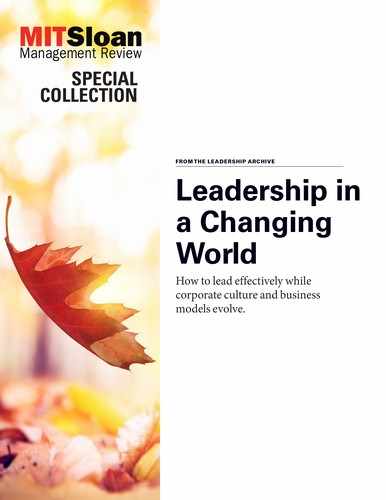The End of Corporate Culture as We Know It
We are evolving toward an age of networked enterprises, in which the traditional hierarchies of the corporation will be supplanted by self-organizing systems collaborating on digital platforms.
It will be an era of entrepreneurship, distributed leadership, and the continual reorganization of people and resources. It will be a time of disintermediation both within and between organizations. Layers of management will fall; the need for centralized systems and trusted go-betweens will dissipate, if not disappear.
Or so many experts predict.
As for me? Yes, I do believe this is the future toward which we are slowly advancing. Those of us deeper into our careers may not see it come to full fruition during our organizational lives, but the trends are real, and they are already on display if you care to look for them.
And that makes me worry for my friends in the corporate-culture business. Because I’m not sure that culture is going to matter that much in the future — at least not in the ways we conceive of it today.
In a 1996 Sloan Management Review article, MIT Sloan professor emeritus Edgar H. Schein described culture as “a set of basic tacit assumptions about how the world is and ought to be that a group of people share and that determines their perceptions, thoughts, feelings, and, to some degree, their overt behavior.”
Jon Katzenbach, another of the field’s most respected thinkers, defines an organizational culture as “the self-sustaining pattern of behavior that determines how things are done.” It is “made of instinctive, repetitive habits and emotional responses.”
As these definitions suggest, culture is meant to provide a well-rooted sense of purpose within an organization, exemplified by a recognized set of behaviors and shared beliefs. It gets — and keeps — everyone marching in the same direction. Creating and maintaining culture is thus painstaking work. It demands focus and commitment throughout organizations. During my work life, I have been lifted by strong corporate cultures and nearly drowned by weak ones. I have no doubt of culture’s power to align an organization and enliven its workforce.
But that’s history speaking. When we look ahead to life in the digital matrix, there is reason to question culture’s role. Our relationships to institutions will become increasingly defined by the activity in which we are engaged at any given time. We will come to view ourselves as “affiliates” more than “employees” — at least as we think of that term today. We will encounter new partners and colleagues on a rolling basis. We will weave in and out of relationships, working interchangeably with who belong to the same organization and those who do not.
In this world, we will no longer prize alignment; we will prize realignment.
Such an environment benefits from clear and universal rules of engagement. It does not benefit from habits that are distinctive to one group of people — which is the essence of organizational culture.
In his 1966 book The Will to Manage, renowned management consultant Marvin Bower described a company’s philosophy as “the way we do things around here.” Those words helped to establish the role of corporate culture and solidify its purpose over the next 50 years. But we are embarking upon a time when the “way we do things” will be reinvented with each new collaboration. And in such waters, a tool meant to reinforce consistency of behavior over long periods of time transforms from a motor to an anchor.
The initial version of this column was published on the MIT SMR website in spring 2017. For reader reactions, please see “Back Talk.”
Paul Michelman is editor in chief of MIT Sloan Management Review. He tweets @pmichelman.
Reprint 58409.
For ordering information, visit our FAQ page. Copyright © Massachusetts Institute of Technology, 2017. All rights reserved.
